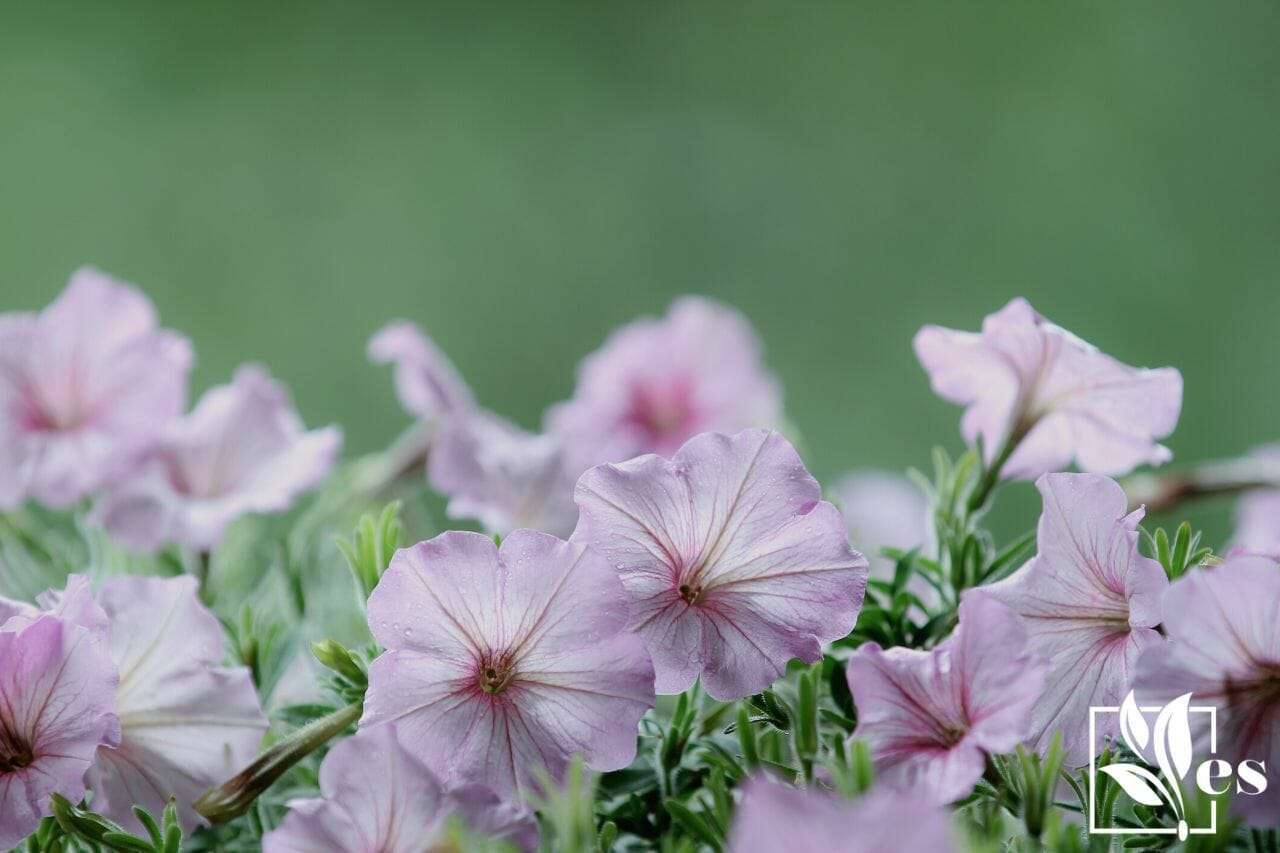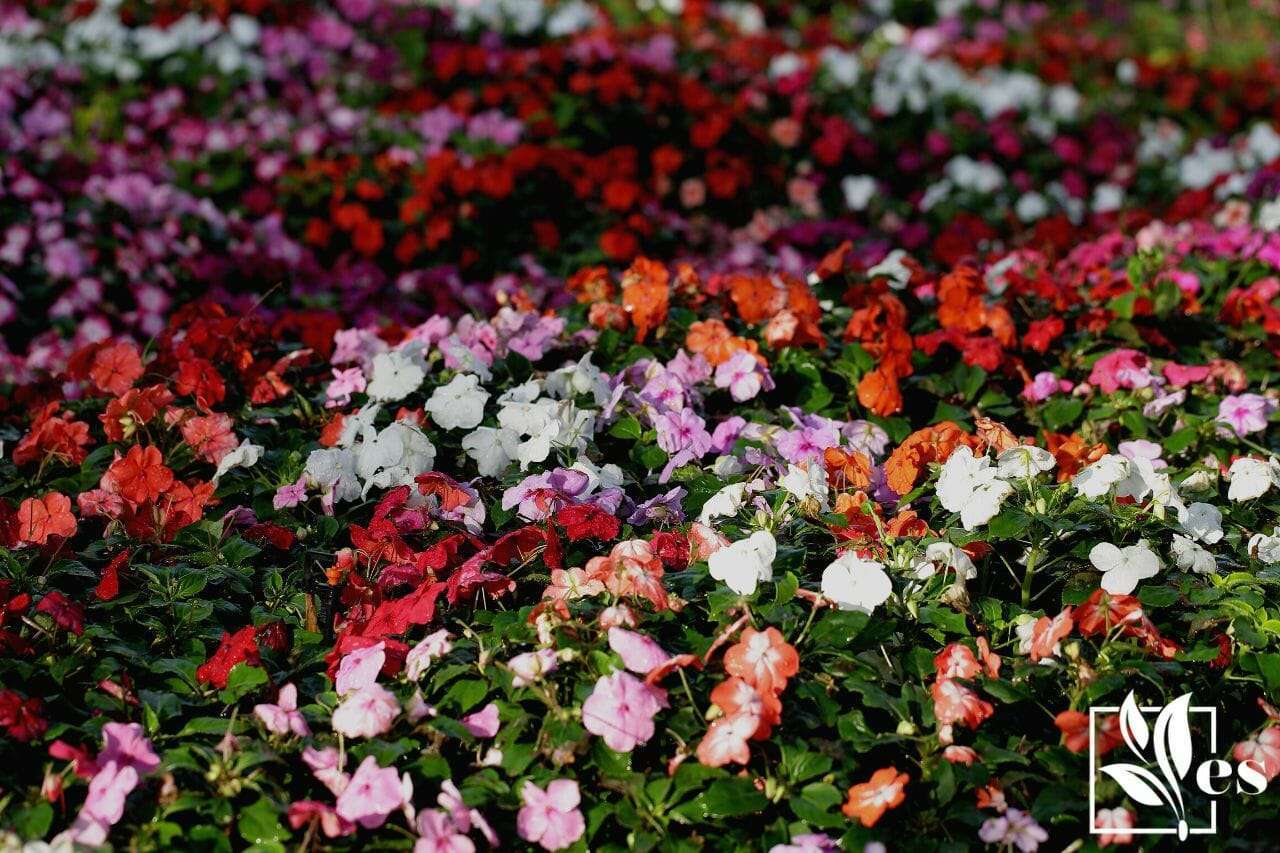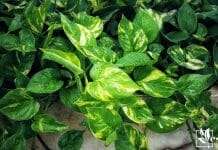Overwatered petunias can start dying if you do not quickly fix them. Some easy ways to tell that you are overwatering your petunias are when they have chlorosis, their leaves are drooping, their flowers are wilting and there is mold on the substrate.

Read this article to learn more signs and solutions for overwatering your petunias.
JUMP TO TOPIC
Signs of Overwatered Petunias
The sign that you are overwatering your petunias would be seen by the yellowing of the leaves, and the brown and wet patches on the leaves. You will see root rots, wilting of flowers, and even fungi or mold around in the plant’s substrate.
– Chlorosis (Yellowing Leaves)
Chlorosis in plants means the yellowing of their leaves. When your petunia plants can only collect water from the soil and not oxygen and nutrients, you will notice petunia leaves turning brown and yellow. Note that chlorosis is a symptom of a lot of problems in plants, so you want to check for other symptoms as well.
It is worthy to note that chlorosis caused by overwatering your petunias will affect every leaf in flower.
For other causes of chlorosis, such as nutrient deficiency, you may find some leaves green while others are yellow. Please do not confuse one instance for another. Make sure that every leaf is turning yellow before you conclude that it is caused by overwatering.
– Brown and Wet Patches on Leaves
This usually happens when the humidity is very high. The leaves will develop brown patches if you continue watering your petunias in the fall months and other months with high humidity.
This happens because the plants collect much more water than they need through their roots and cannot dispose of the water through transpiration because of high humidity. This can lead to their cells bursting.
You can see the visible brown patches on the petunia leaves and if you feel them with your thumb, they will have this wet or “dead” feeling. This is one reason why you should not water your plants in the fall months as regularly as you do in other months.
– Root Rot
Root rot is one of the most common ways to tell that your petunias have more than enough water in their substrate. However, this symptom is not what you should wish for because you can lose a lot of your plants because of it. Root rot is a fungal attack that occurs in damp substrates.
When you overwater the plants, fungi start to attack the roots and every root will start to die sooner or later. You should also see the leaves and stems becoming weak and falling. Don’t worry, if you can detect root rot early enough, you still have enough time to save your plants.
– Drooping Leaves
Overwatering your petunias can make them bend or droop their leaves. This means that the leaves will not be firm or erect. If you look at them or feel them, you’d surely notice that they are very weak and will soon start wilting or die. Drooping leaves can also be a sign of nutrient deficiency.
Why drooping happens is that when your petunias collect more water than they need, the cell walls of their petioles (i.e. the little leaf stem) start to burst. As more cell walls burst, the leaves will no longer feel firm or erect. In time, they will start wilting as nutrients can no longer go to the leaves through the petioles.
– Wilting or Falling Flowers
Petunias are prized for their stunning flowers, so this symptom will surely upset you. When you give your plants more water than they need for a very long time, they will lose their flowers. The flowers will either wilt before falling or fall immediately after the plant is stressed.
The flowers wilt or fall because the plant collects more water than nutrients, and petunias need a lot of nutrients to produce and maintain their beautiful flowers. Well, every flower will not fall or wilt at once, so you still have time to investigate why they are lagging when you see some flowers of your petunias hanging.
– Presence of Mold or Fungus Gnats in Substrate
One very fine way to tell that you are overwatering your petunias is to see mold or fungus gnats in your plant’s substrate. You can use this method in every plant that you are growing. When the soil is too saturated with water, the roots of your plants will start to die, and they may attract decomposing fungi.
When there is a large number of fungi on the substrate and it is time to reproduce, they will produce mold on the surface of the substrate. Fungus gnats are insects that eat mold (fungi), so they will be attracted to such a substrate. Therefore, the sight of these creatures should tell you that you are overwatering your plants.
– Weak or Dying Plant
The ultimate or final sign to tell that you are overwatering your petunias is when they are dying. The plants do not just die without showing some of the signs above, so you should already know that something is wrong with them before they die. Note that you can only save your petunias when they are still alive.
A dying petunia is one with almost every leaf falling or wilting, the flowers dropping and the roots dying. Even though this can be scary, your petunias will not quickly wilt or die so long as you do not abandon them for long.
Now you know so many ways to tell that you are overwatering your petunias. Can you fix them? Continue reading.
How Do You Revive Overwatered Petunias
If your petunias are dying because of overwatering, follow the steps below to revive them:
– Dig To Reveal and Treat the Roots
The first thing that you must do is to reveal the roots of your potted petunias. Admittedly, this can be tasking as you’ll need to untangle the leaves, flowers, and even roots of the plant. Well, you want to reveal the roots to examine them and treat them if need be. You can use clean water and rinse off the dirt from the roots after revealing them.
When you see the roots, examine them for discoloration. The roots should look white or pale. If some parts of the petunia roots look dark, black, and discolored from the rest, you should prune them off. After pruning the bad roots off the plant, you can then replant it.
– Use a New Substrate or Amend the Previous One
Do not replant your petunias in the previous potting mix, especially if the plants suffered from root rot. To eliminate the chance of bacteria and fungi attacking your petunias for a second time, you need to use a new potting mix or substrate. To reuse your old petunia substrate, you must bake it first to kill the germs and pathogens.
The new potting mix should be as well-drained and nutritious as the previous one. If you are reusing the previous one, you should consider amending it with extra sources of nutrients such as compost. Well, when you get your petunia substrate ready, you should replant it.
– Prune off Weak or Dying Leaves
So long as the weak or dying leaves are still attached to your petunia, they may still be receiving some amounts of nutrients or energy which are wasteful. To prevent this waste, you need to prune the dead leaves off. Pruning these leaves also helps to retain the beauty of your petunias.
While pruning the plants, you want to make sure that you use only sterilized tools. Using contaminated tools can expose the plants to some pathogens. Also, dispose of the weak leaves and do not leave them to decay on the plant’s substrate. These leaves can carry fungi that can lead to root rot.
– Carefully Water Your Petunias
Your petunias got sick because you are overwatering them. After treating them, you do not want to continue with your previous watering rate. Make sure that you only water petunias as soon as the topsoil or surface of the substrate is dry. Do not overwater the plants this time to avoid problems.
You also want to amend the substrate if it does not drain water quickly while watering petunias. Mix in some perlite to the new potting mix so that water will not stay in the substrate for long. Finally, make sure that the drainage holes of the pot are not blocked with dirt or sand.
– Continue to Observe Your Petunias
With all the signs and symptoms listed above, you can easily tell that your petunia plants are overwatered. However, it is also possible that your petunias may not be suffering from overwatering, but from other problems. If this is the case, it means that after treating your plant, you may continue to see some of the signs and symptoms listed above.
To grow your petunia plants without problems, you will need to know the growth requirements of the plant so that while examining your plant, you will see what you need to watch out for.
Continue reading to get a brief growth requirement of petunias.
Other Growth Requirements
While overwatering your petunia plants can lead to various problems, there are other requirements of petunias that you must pay close attention to if you want to grow your plants easily. Here are some of the petunia growth requirements:
– Substrate Requirements
The petunia soil or substrate should be sandy and light. You want to make sure that it is well-drained. Also, the pH preferred for petunias is 6.5. Regarding the pot or container, do not use any container three or more inches than the root system. Finally, do not forget to perforate the containers or hanging baskets for drainage holes.
– Temperature Requirements
During the day, you want to ensure that your petunias grow in a room with 60-75 degrees Fahrenheit. At night, 55 to 65 degrees Fahrenheit is recommended.
Instead of constantly checking the temperature, only grow your petunias in USDA hardiness zones 9 to 11. If you live outside of these zones, you may want to look for a variety that is suitable for your region,
– Humidity Requirements
Petunias love high humidity so long as you are not overwatering them. The room or environment should have 55-80 percent humidity for your petunias to grow without humidity-related problems. If the humidity level is low, consider buying a humidifier. Make sure that you do not keep your plants in a place with strong wind.
– Nutrient Requirements
You want to feed your petunias with a balanced fertilizer. Some recommended compositions are 8-8-8, 10-10-10 or 12-12-12. In the active growing season from spring to autumn, you can feed them weekly. Remember that they need a nutrient-rich substrate as well because they produce a lot of leaves and flowers. You should also check out the 46-0-0 Fertilizer and 0-0-60 Fertilizer, which are very popular and helpful.
– Petunia Leaf and Flower Care

One great way to care for the leaves and flowers of your petunias is to grow them in their required conditions. So long as the environment is just right, you should not face any challenges while growing your petunias. However, to help improve your plant’s appearance, mist its leaves with water droplets occasionally.
Now you are ready to grow and care for your petunias, right? Congratulations!











